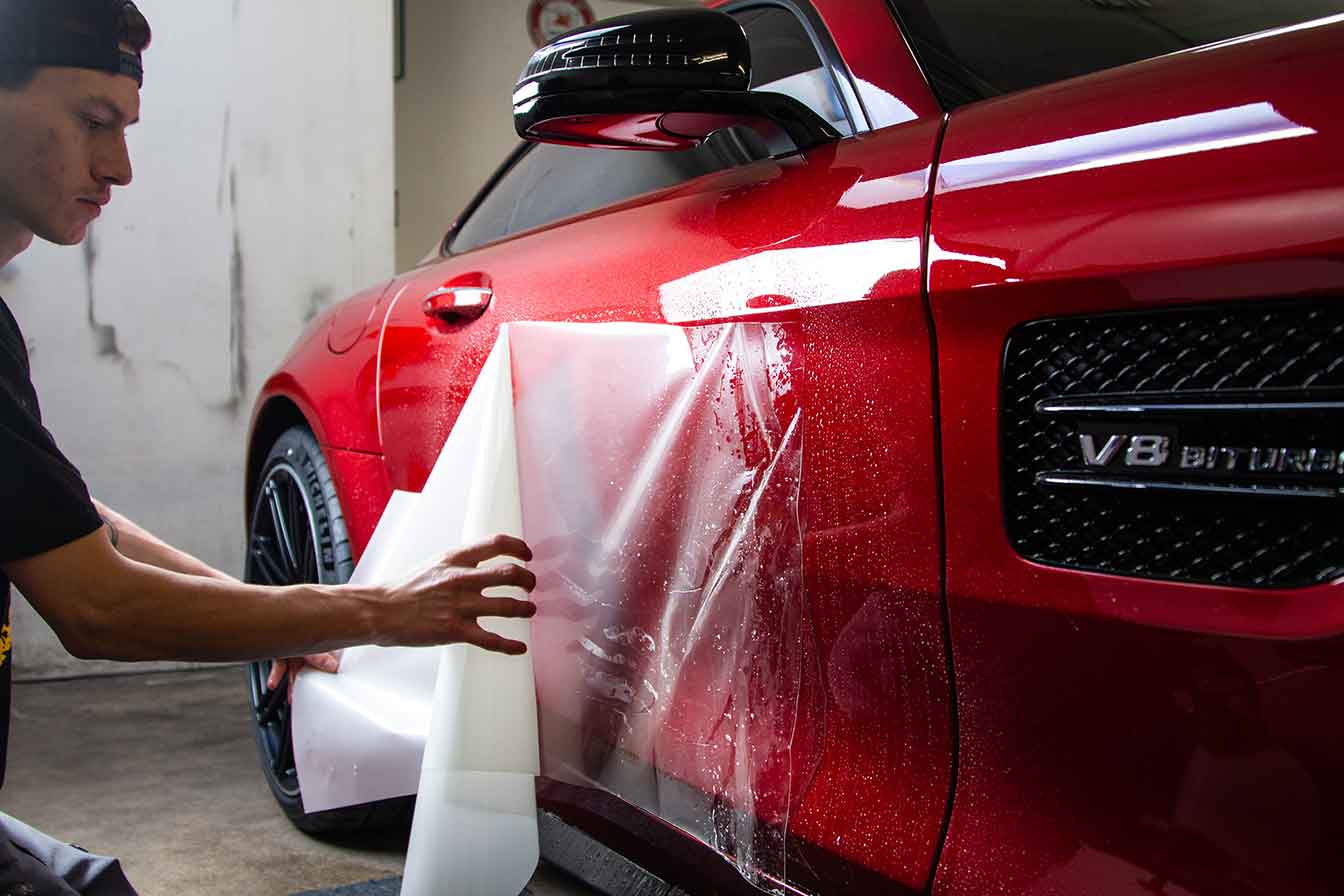Why Ceramic Covering Is the Ultimate Remedy for a Flawless End Up
Ceramic layer has emerged as a leading service for those seeking a flawless finish for their cars, thanks to its amazing longevity and safety attributes. What elements really established ceramic layer apart?
What Is Ceramic Finishing?

When applied appropriately, ceramic coating creates a hydrophobic surface that drives away water and dirt, making it easier to preserve and clean up. Unlike standard waxes or sealers, which usually supply short-lived defense, ceramic coatings can last for several years, depending upon the product high quality and application approach. The procedure of using ceramic coating needs thorough preparation, consisting of detailed cleansing and occasionally repaint correction, to make sure optimum bonding and performance.
Ceramic finishings are not limited to automotive surfaces; they can likewise be utilized on various products, consisting of glass, metal, and plastics, providing a versatile solution for boosting protection. In general, ceramic finishing represents a considerable innovation in surface defense modern technology, integrating both practical and aesthetic advantages for a variety of applications.
Benefits of Ceramic Coating
While many surface security choices exist, the advantages of ceramic layer stick out because of its distinct buildings and resilient efficiency. Among the main benefits is its outstanding longevity. Ceramic Coating Philadelphia. Unlike typical wax or sealants that need frequent reapplication, ceramic finishings give a resilient layer that can last for several years, significantly minimizing maintenance initiatives
Another significant advantage is enhanced protection versus ecological impurities. Ceramic finishings develop a hydrophobic surface that repels water, dirt, and numerous contaminants, making it less complicated to clean. This attribute not just preserves the vehicle's look but likewise minimizes the danger of rust and oxidation, specifically in harsh weather.
In addition, ceramic finishes supply remarkable resistance to UV rays, protecting against fading and degradation of paint over time. This UV security is vital for maintaining the aesthetic value of surfaces and vehicles exposed to direct sunlight.
Additionally, the glossy coating accomplished with ceramic coating enhances the total visual appeal, providing surfaces a showroom-quality sparkle. Generally, ceramic coverings stand for a considerable development in surface area security technology, providing long-lasting advantages that accommodate both aesthetic and useful demands.
How It Functions
Comprehending the scientific research behind ceramic layers exposes how they offer such exceptional protection and long life. At its core, a ceramic finishing is a liquid polymer that chemically bonds with the car's factory paint. This bonding develops a protective layer that is both hydrophobic and oleophobic, repelling water, dust, and oil. The primary site web element of many ceramic coverings is silicon dioxide (SiO2), which is originated from quartz. This compound adds to the covering's hardness and resistance to scratches, UV rays, and ecological impurities.
The application process includes numerous actions, consisting of surface area prep work, which is important to achieving ideal bond. As soon as used, the coating undergoes a curing procedure, throughout which it solidifies and creates a semi-permanent bond with the paint surface area. This bond is what differentiates ceramic coatings from traditional waxes and sealers, supplying a longer-lasting protective obstacle that can withstand for years.
Moreover, the density of the finish can boost its protective qualities, ensuring that it can stand up to extreme problems. Inevitably, the science of ceramic finishings incorporates sophisticated materials with cutting-edge application strategies to provide an unrivaled level of defense and visual improvement for cars.
Comparison With Conventional Techniques
When contrasted to standard paint protection techniques such as sealers and waxes,The benefits of ceramic coverings end up being especially obvious. While waxes provide a momentary shine, typically lasting a couple of weeks to a pair of months, ceramic coatings offer a long-lasting protective layer that can endure for several years. This toughness significantly minimizes the frequency of reapplication, making ceramic layers a more cost-efficient service with time.
Furthermore, typical techniques frequently require substantial prep work and numerous applications to achieve a satisfactory degree of protection. In comparison, ceramic coverings bond at browse around these guys a molecular level with the automobile's surface, developing a robust guard versus ecological contaminants like UV rays, acid rain, and roadway salts. This bond enhances the lorry's resistance to scratches and swirl marks, which prevail with traditional waxes and sealants.
Additionally, the hydrophobic properties of ceramic coverings fend off water and dirt, leading to easier cleansing and upkeep. On the other hand, wax and sealant-treated browse around this web-site surfaces can attract crud, demanding even more frequent cleaning - Ceramic Coating Philadelphia. Overall, ceramic finishings not only supply remarkable protection however likewise provide an extra long-lasting and visually attractive finish, developing them as the favored option for discerning car proprietors
Application and Maintenance Tips

Using a foam applicator, apply the finish in tiny areas, complying with the supplier's standards relating to thickness and overlap. Enable sufficient treating time in between layers, commonly 24 hours, to make certain proper bonding. After application, it is crucial to prevent direct exposure to water or severe elements for at the very least a week to enable the covering to fully cure.
In addition, making use of a ceramic maintenance spray can boost the finishing's hydrophobic buildings and longevity. Normal assessments for any type of indicators of wear will help keep the finish's stability and preserve that pristine coating.
Conclusion
In conclusion, ceramic coating arises as a premium option for accomplishing a perfect vehicle coating. By developing a robust bond with manufacturing facility paint, ceramic layer effectively guards versus scrapes, UV rays, and environmental impurities.
